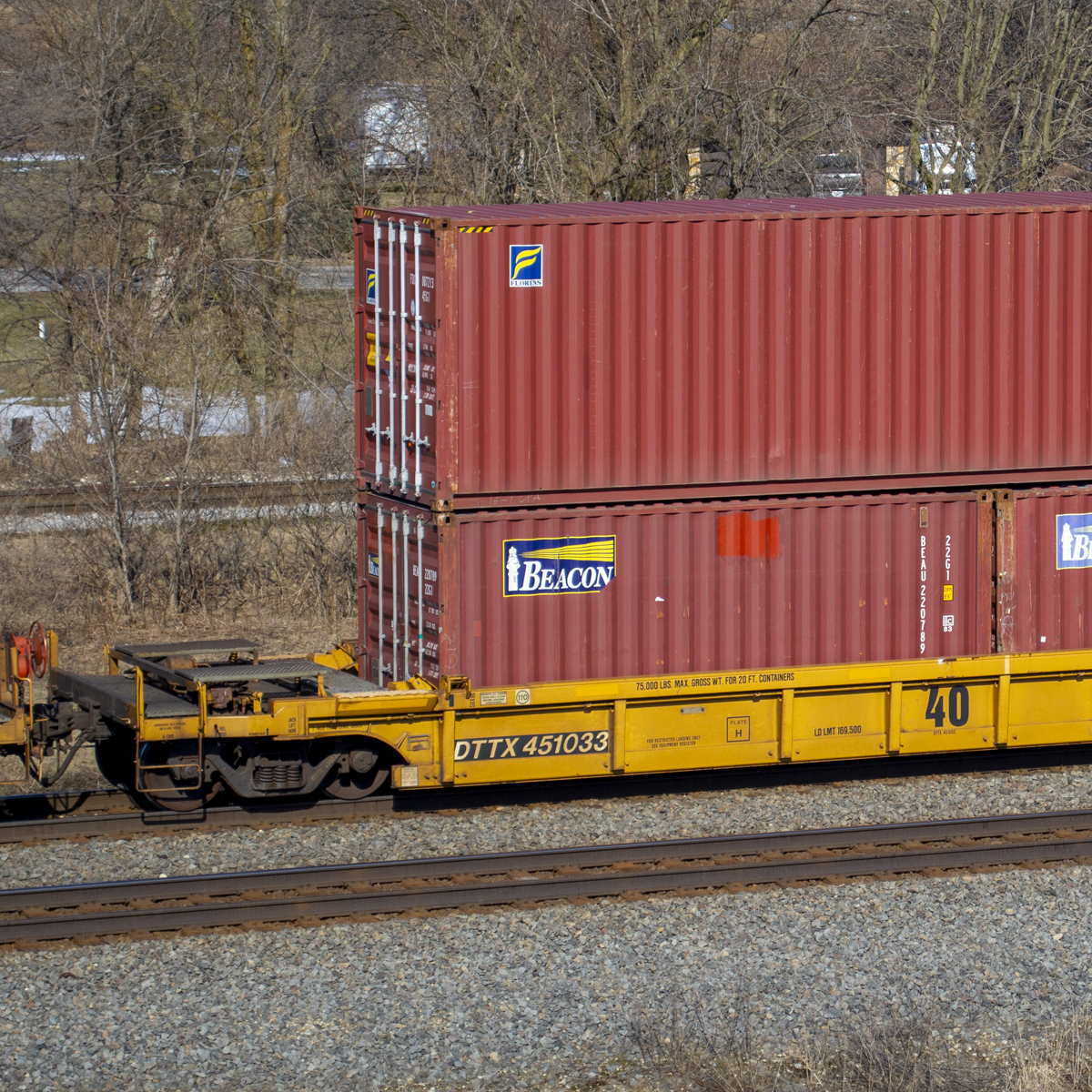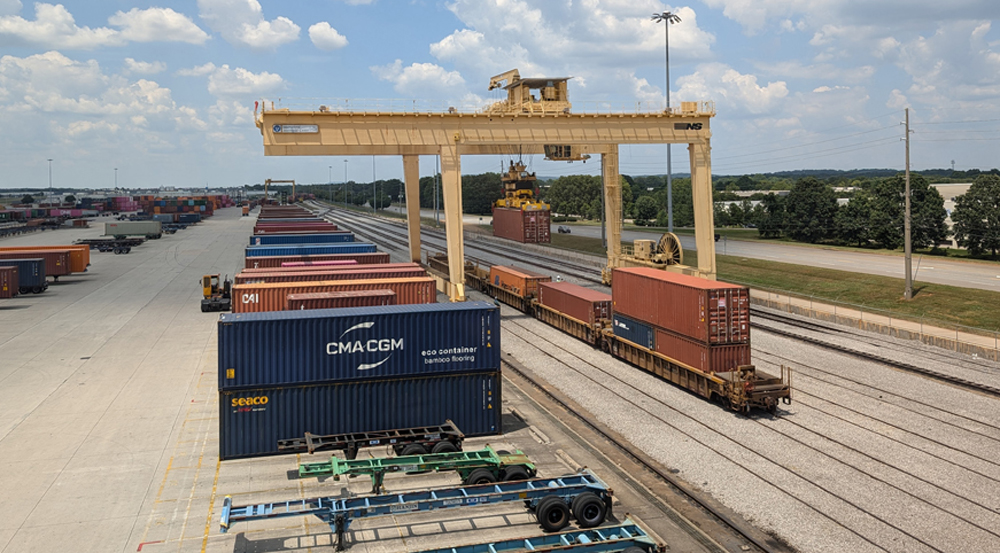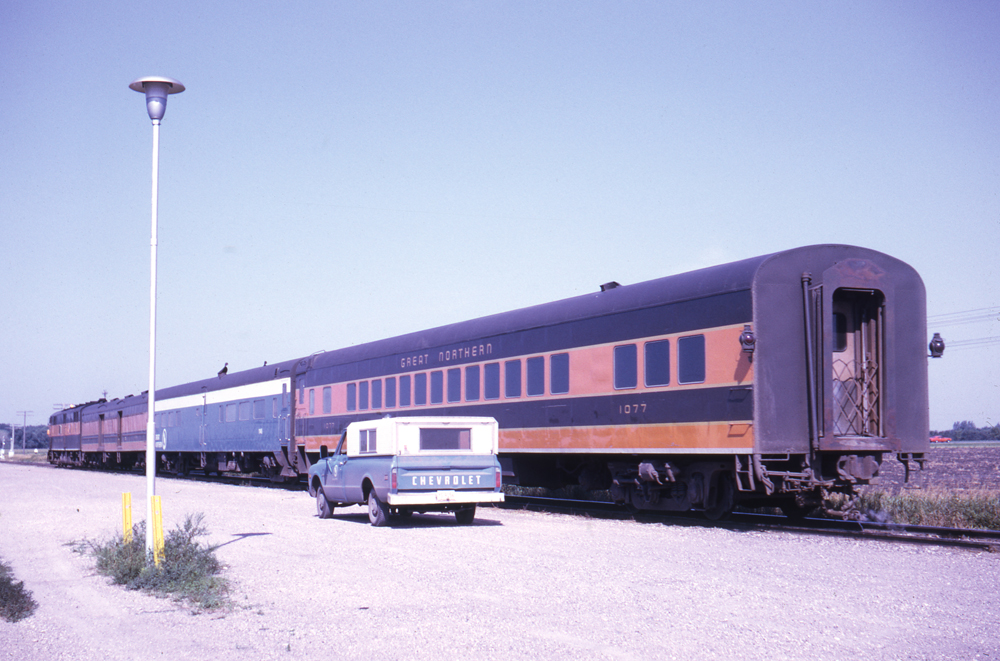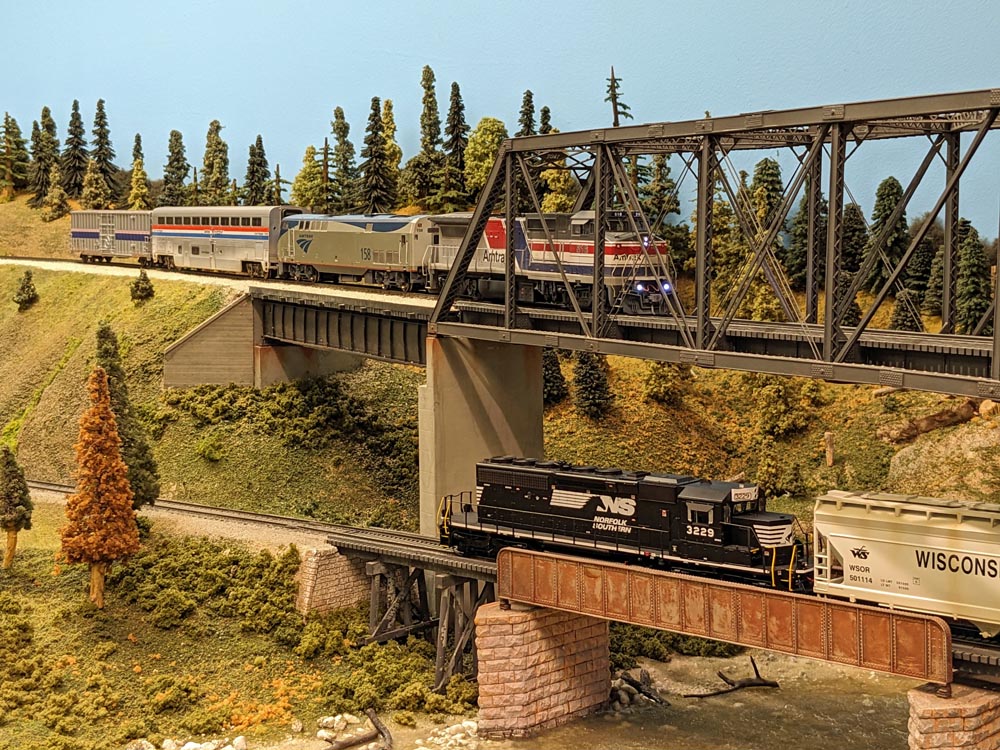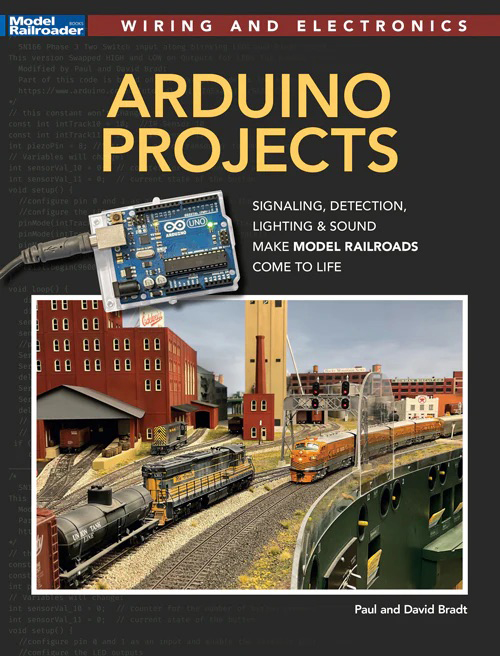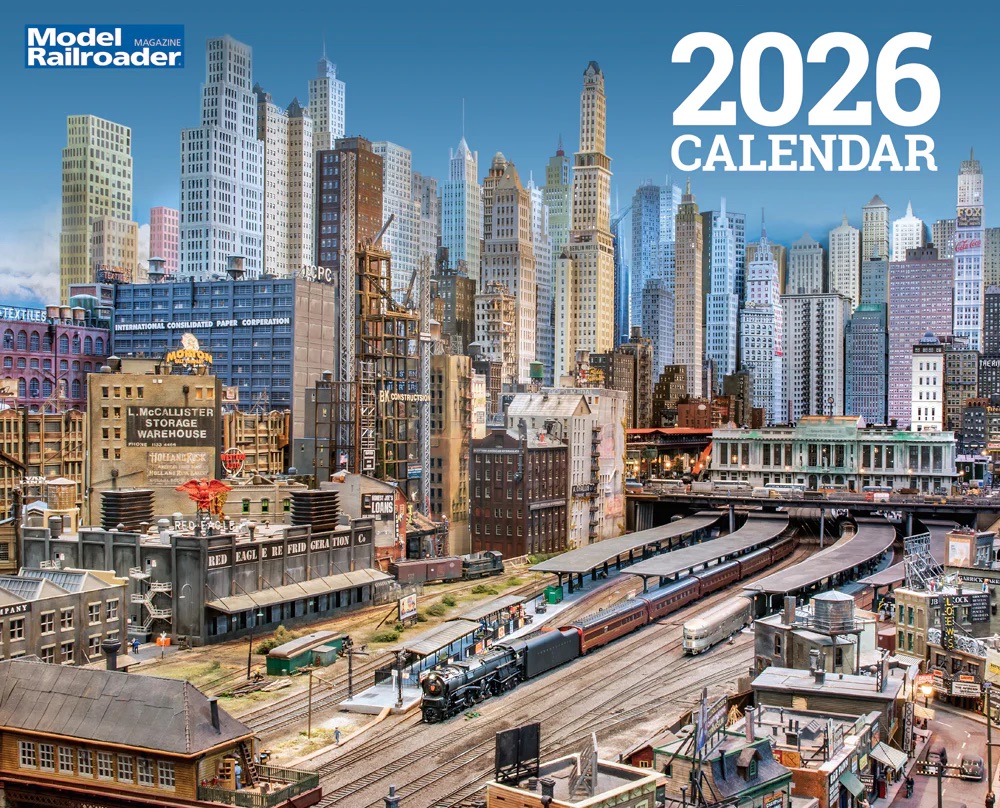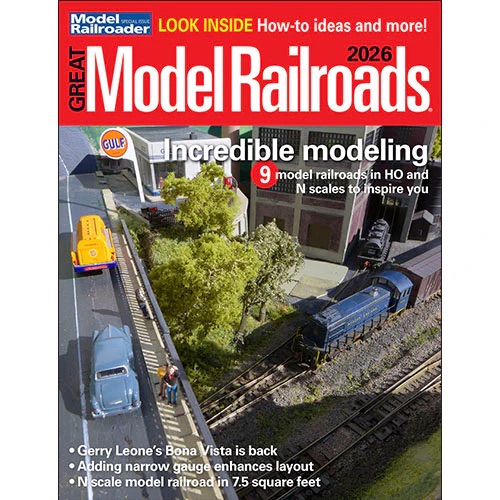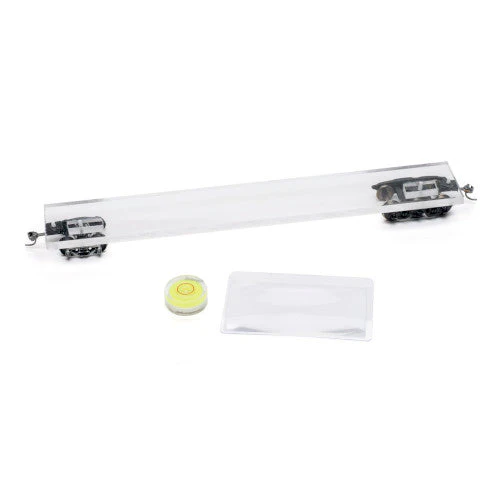There are various ways we can convey to visitors and operators our modeling objectives. Locomotives and rolling stock provide clues as to the prototype (or freelanced) railroad we’re modeling. Those same models, as well as vehicles and figures, can be used to define the era. But what about the model railroad’s locale? Signature structures or geographic features can help. However, if you want to eliminate all doubt as to the layout’s locale, consider using signs. Here are some examples of railroad signs you can model.
Entrance points
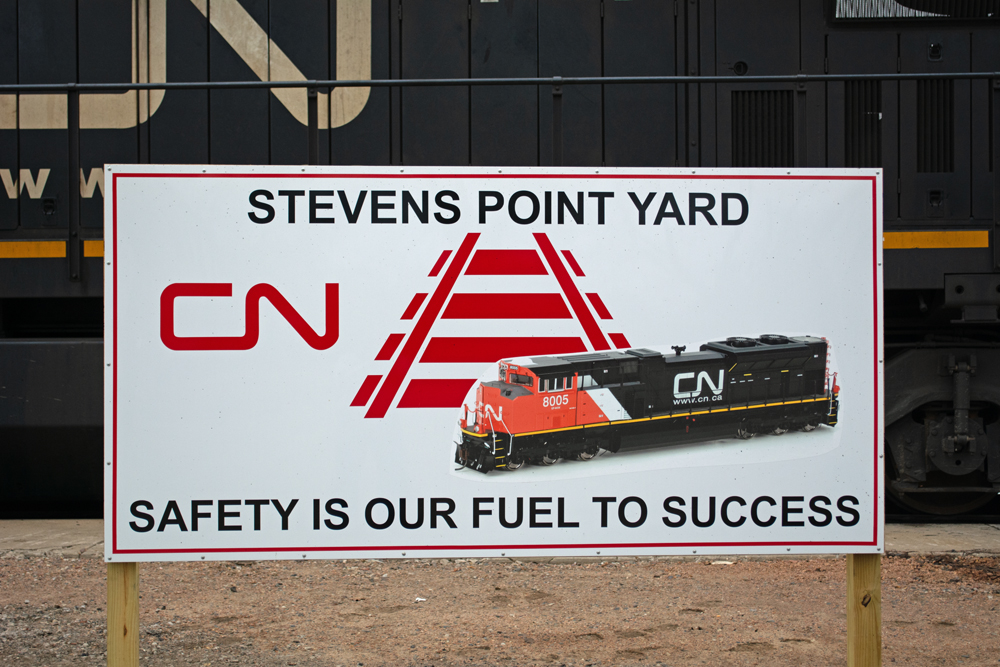
Stevens Point, Wis., located in the center of the Badger State, is home to a large Canadian National yard. In addition to the classification tracks, there’s a roundhouse, RIP (repair-in-place) tracks for freight cars, and diesel servicing tracks. The last location is visible from public property, at the corner of Illinois Avenue and Wayne Street.
During a visit to Stevens Point in March 2015, I spotted a sign I hadn’t seen on previous trips. Across the top, it read “Stevens Point Yard”. In the middle was CN’s “wet noodle” herald, stylized rails and ties, and SD70M-2 No. 8005 — Yes, that is a photo of the Athearn model! Near the bottom of the sign, it reads “Safety Is Our Fuel To Success”. The slogan makes sense as the sign was near the diesel servicing tracks.
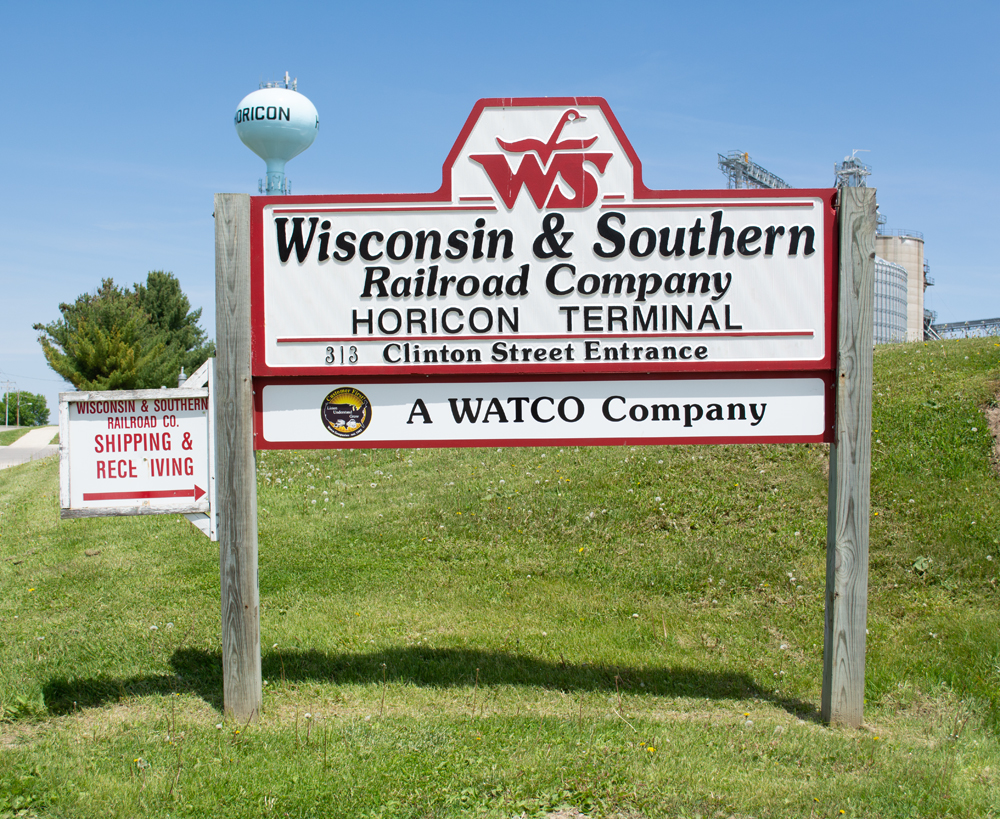
The entrance points at Wisconsin & Southern’s Horicon (Wis.) Terminal are clearly identified with signs like this one on Clinton Street. The sign features the railroad’s flying goose herald, name, location, and street address. After Watco acquired the WSOR in 2011, it added the sign below. Notice how the add-on sign follows the same red-and-white color scheme as the original sign, and the font is similar as well.
The “Wisconsin & Southern Railroad Co. Shipping & Receiving” sign was attached to the larger sign at the west end of the yard before Watco took over operations. The sign takes the guess work out of which entrance delivery drivers should use.
Division points
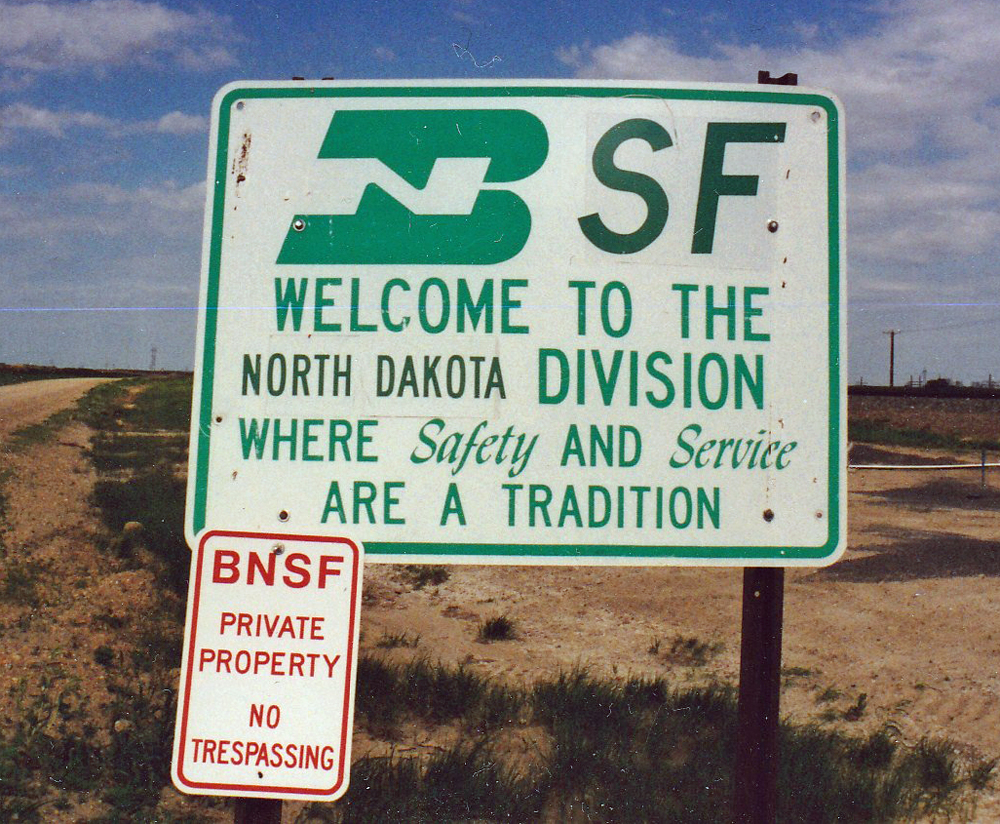
In addition to location-specific signs, there are also region-specific railroad signs you can model. Take, for example, this BNSF Ry. sign welcoming employees to the North Dakota Division. If I remember correctly, the sign was at or near Noyes, Minn., along the border between the United States and Canada.
The green-and-white scheme indicates the sign dates back to the Burlington Northern era. The “SF” lettering covers the part of the sign that had BN’s name spelled out. A piece of white Scotchcal was put over “Dakota”. New “North Dakota” lettering was applied over the patch, reflecting the division’s post-merger name.
Unlike the previous signs, this one is attached to U-type steel sign posts. Burlington Northern standard sizes for these posts were 11’-0” (No. 1), 13’-0” (No. 2), and 7’-0” (No. 3), all with ⅛”-thick anchor plates fastened to the post with 5/16”-diameter rivets. There were 7/16”-diameter holes on 3” centers running the full length of the posts, starting 1-½” from the top. Black was the standard color for BN’s U-type steel sign posts.
Direction signs
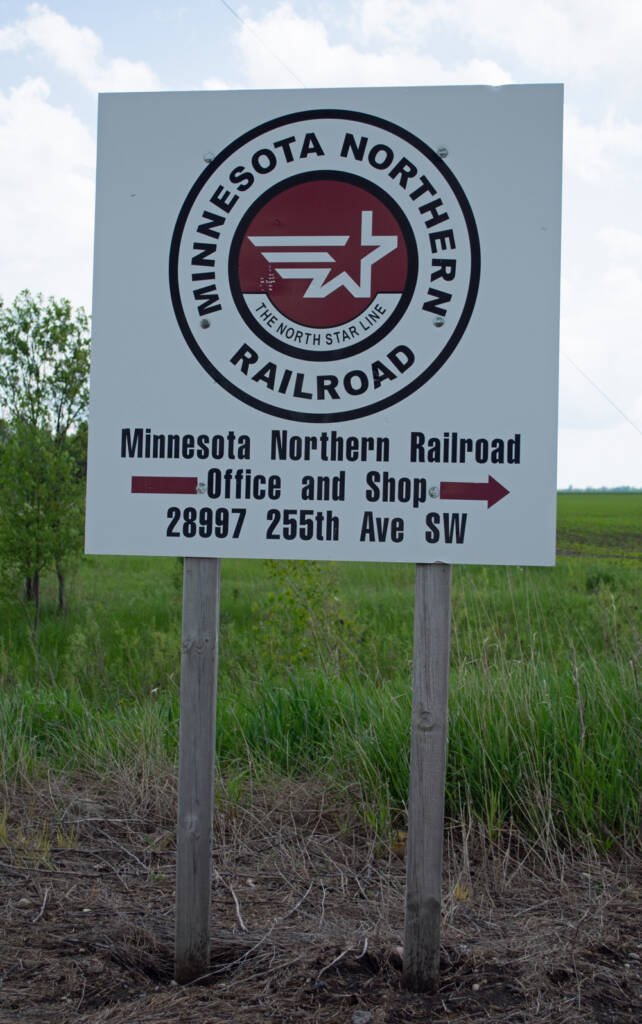
When I visited Crookston, Minn., my hometown, in May 2016, I noticed something new at the east and west ends of the Minnesota Northern (MNN) yard: Direction signs. The yard, located at the south end of town, is framed by farm fields and reached by gravel roads — not exactly the easiest place to find. I don’t know if there were direction signs for the yard during the Great Northern and early Burlington Northern eras. I know there weren’t any during the late BN (mid-1980s to 1995), BNSF Ry. (1995-’96), and RailAmerica (1996-2000) eras. This may have been an intentional omission, to keep those that didn’t have reason to be in the yard away from railroad property.
The sign shown here is at the east end of the yard. It features the railroad’s herald, name, and street address, as well as an arrow. Direction signs like this make it easy for vendors, delivery drivers, and first responders (in the event of an emergency) to find the correct location.
On your layout
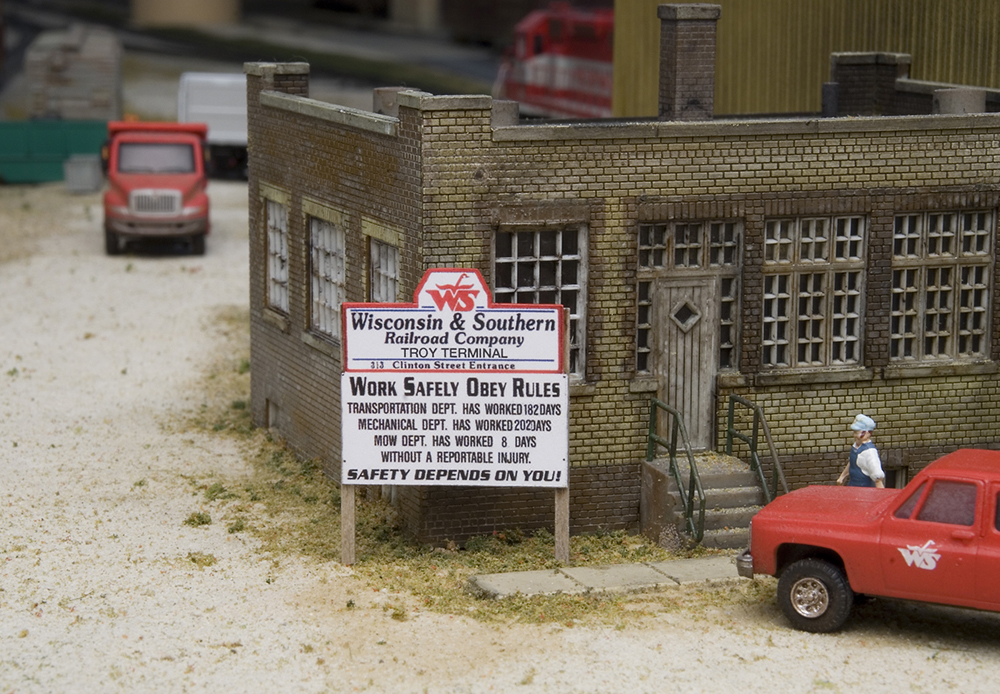
Notice something about the prototype photos above? I stood as square as possible in front of the sign when taking the image. I did this with model making in mind. With photo-editing software, you can correct the color, shape, and size of digital files, print them out, and make a sign. You can do the same with slides and prints, but you have to scan them first.
We did just that for the engine terminal scene on our HO scale Wisconsin & Southern Troy Branch layout, featured in the March 2008 MR. Former Senior Editor Jim Hediger and I researched the full-size WSOR prior to building the Troy Branch. I took a photo of the sign in Horicon during one of the research trips. I scanned the 35mm color slide and gave the electronic file to our former lead illustrator Rick Johnson. He reduced the sign to HO scale and used photo-editing software to change the name to Troy Terminal. Rick then printed the sign on high-quality paper.
After cutting the sign out, I attached it to a piece of .020” plain styrene sheet with spray adhesive. I used Polly Scale Caboose Red to touch up the edges on the top half of the sign, and the same company’s Flat Aluminum where the terminal’s safety record is displayed. Testor Corp. discontinued the Polly Scale line several years ago, but similar acrylic colors are offered by Rail Center and Micro-Mark.
Then I attached the WSOR sign to HO scale 6 x 6 stripwood posts with cyanoacylate adhesive. If you want to attach the railroad signs you can model to U-type sign posts, Showcase Miniatures offers a 12-pack in HO scale.






